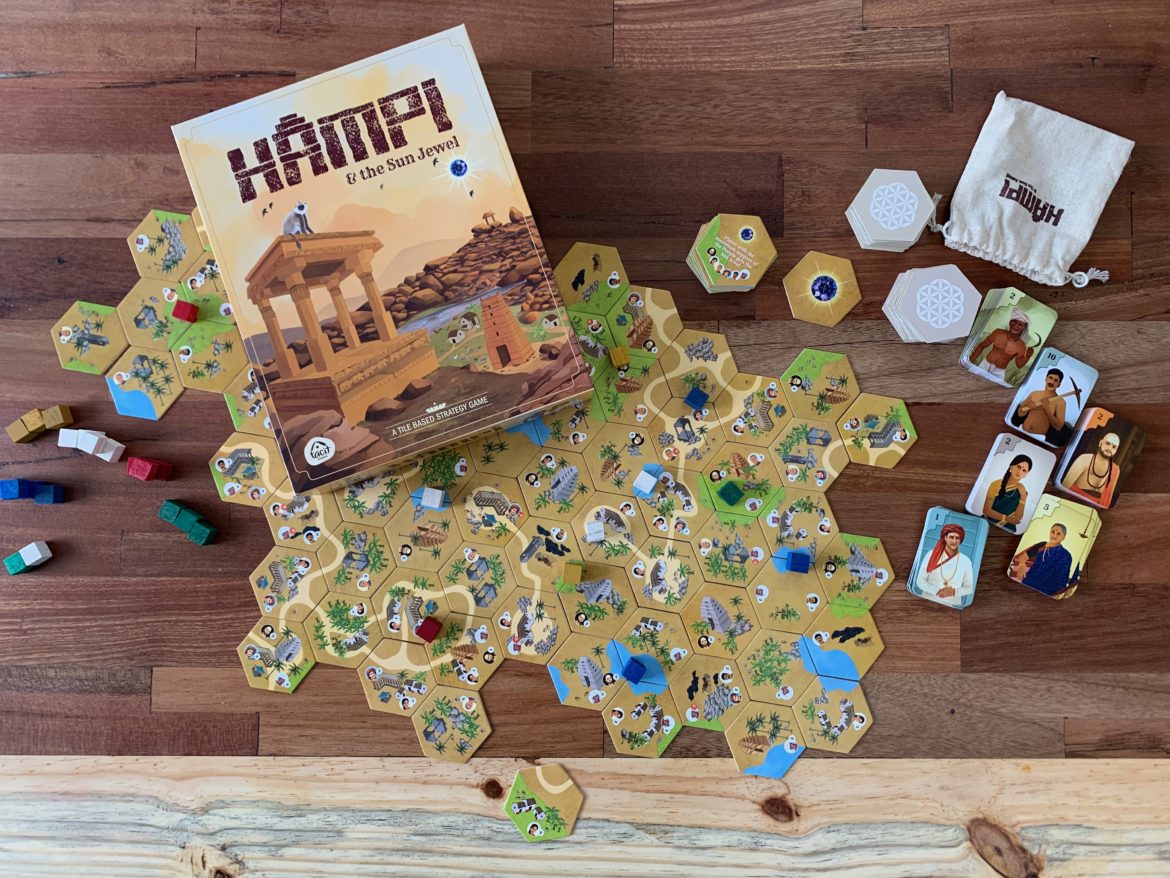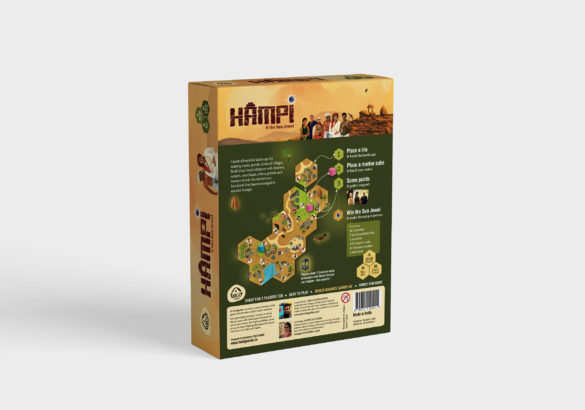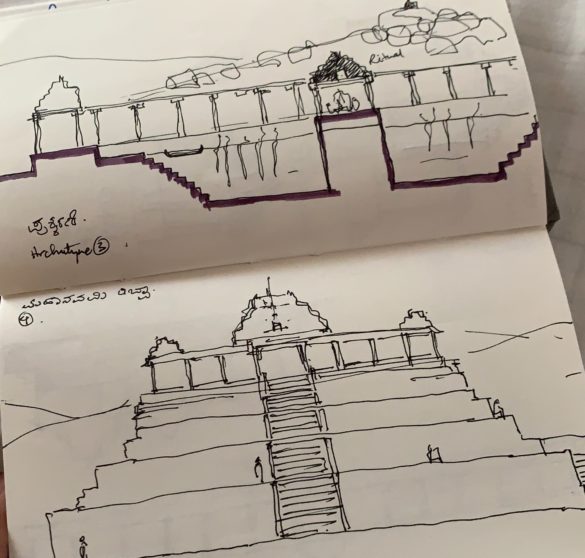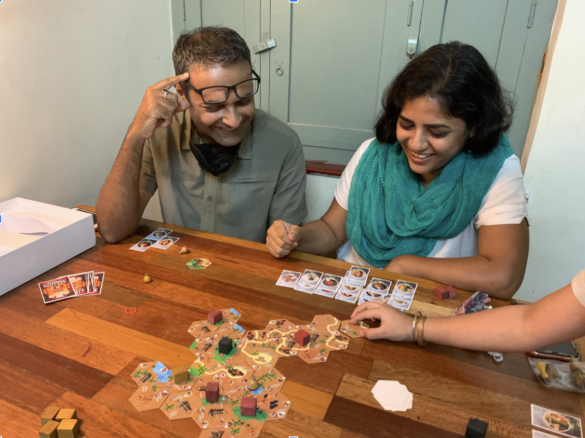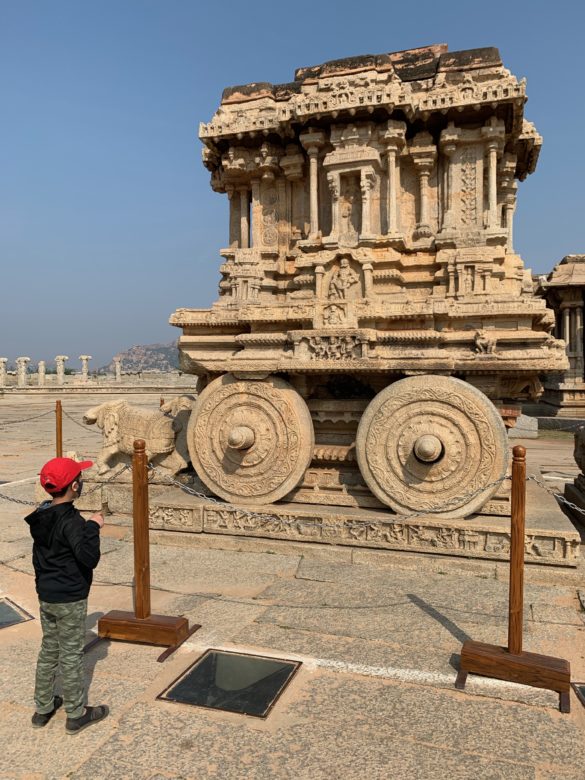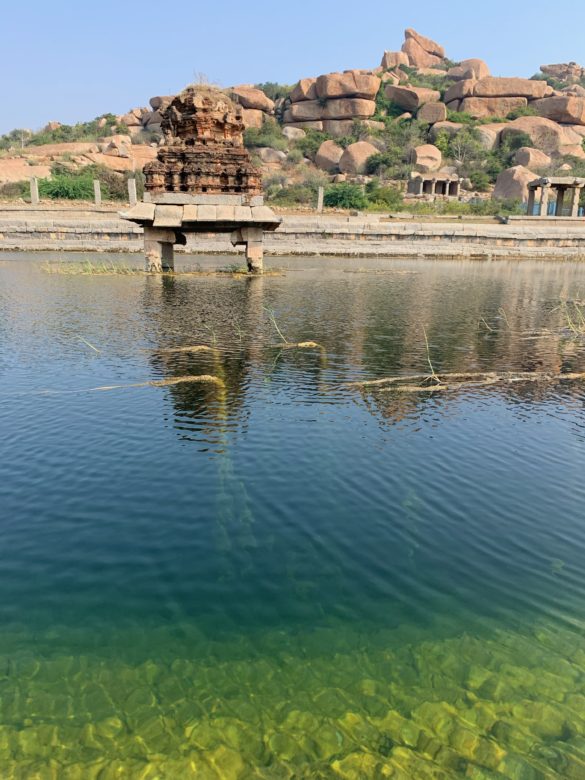Our studio is called Tacitgames. ‘Tacit’ means that which is expressed without words. It’s quite possible. We design board games and puzzles. We hope to tell a story by creating an activity, creating some new situations, where players negotiate challenges, build, take actions that change the course of the events, immersing in a story setting. I would like to share a story that inspired a new game we designed. Last year, just before the Pandemic invaded our lands…
On a bus journey…
Elderly wise man (E): “ So where are you heading?”
Me (M): “Hampi, sir!”
E: “Ah! Are you hoping to find any treasure?”
M: “Didn’t think about ‘that’ sir! Why?”
E: “In our times, people searched for precious stones, gold that were dropped or hidden when the wealth was moved…in Hampi.”
M: “Really?”
E: “Yes! What do you do?”
M: “I design things, like objects.”
E: “ I see, what are you designing now?”
M: “I am designing a board game, like chess, ludo…”
E: “ Why are you traveling to Hampi?”
M: “In search of a story.”
E: “Why a story? I do not see any stories in chess or ludo. They are just moving pawns.”
M: “You are right, but people believe in stories sir, without it the game is an abstract competition. The story gives it a context, it creates a space for the player to pretend in an alternate world and they tend to stay for a longer time.”
E: “I see, but why are you designing this?”
M: “I researched a bit on this, I feel – when I read books, it’s usually the author who entertains you, but when you play, you entertain yourself. We essentially like to play and pretend. When I was a kid, during summer vacations, my aunt used to get us games to play indoors and make us avoid the hot sun. We learned to agree, challenge, share, compete, help, and had great fun playing games.”
E: “Tell me about the reading part, why is it limiting?”
M: “It’s not, but you don’t feel part of the event itself when you read, but when you play, you make choices, affect the course of events, and each time you have a different experience. You can also create a notional reality and dive into it pretending you are a king, queen, or a farmer, and so on. A nice mixture of goals and rules sets you up into a motion of balancing forces and using stories in a dynamic way, revealing the inner natures of players… it’s exciting”
E: “So how do you make it?”
M: “I sketch, make notes, make dummies, break them, learn from how it works, I give out to play a lot to others, listen to them, refine. Then I add art, color, rules, mechanisms, story, conditions and check for beauty, continuity, balance, and quality of making.”
(Pause)
M: “Sir! Could you tell more about the treasure you were talking about at Hampi?”
E: “ Oh! I am sure you read a lot about the history of Hampi. The place shined to glory for over 200 years starting in the 13th century, when two commanders from the Hoysala reign, Hakka, Bukka started protecting and expanding infrastructure in this region. Due to its location and enabling a trade route, it became prosperous. During the reign of Krishnadevaraya, it was at its peak, it is said by historians that it was the world’s second-largest medieval-era city after Beijing, and probably India’s richest. Its wealth attracted 16th-century traders from across the Deccan area, Persia, and the Portuguese colony of Goa. Cutting short the story, the empire was turned into ruins when the Deccan Sultanate kings plundered the place, looting and destroying for over years – everything that was created. The wealth was moved from one place to another several times and much of it was even hidden.”
M: “ I am beginning to get ideas! Thanks for this story. It’s a chance to walk back in time, seeing our lands as they are and the memories they contain”
E: “ So how do you play your game?”
M: “It is quite simple. You have a deck of hexagonal tiles, you need to place them next to each other matching the visuals on the cards like roads, ponds, farms, temples, and villages. If you complete a farm or road loop, you actually would have developed the region effectively. You get support points each time you complete a region and gather support from locals like farmers, miners, elders, women, merchants, and priests. You have to keep building the city, by adding tiles.”
E: “ How does one finish?”
M: “ Ya, the story starts with a Sun Jewel which is a tile, one who manages to keep the jewel tile till the end wins and the game finishes.”
E (Smiling): “ Did you add that rule just now or what ?”
M (Smiling): “ Now since you talked about the lost treasures, I find this a great coincidence.”
E: “ Well all the best! It sounds interesting, but haven’t you added history like Virupaksha temple or Stone Chariot?”
M: “ Yes Sir, it was intentional, I want to see how players really connect with the elements. I have some ideas on adding some expansions of historical significance or may turn out to be something else really based on how the players want to pretend! Anyways Hampi is also felt when you walk, see the hills, the hot sun, the cool stone temples, market ruins, people, broken gods, Langurs, and a huge void in time at least for me.”
E: “ It was good talking to you, didn’t realize the time that went by – stories shrink the time.”
M: “ Well said, same here. Thank you very much!”
